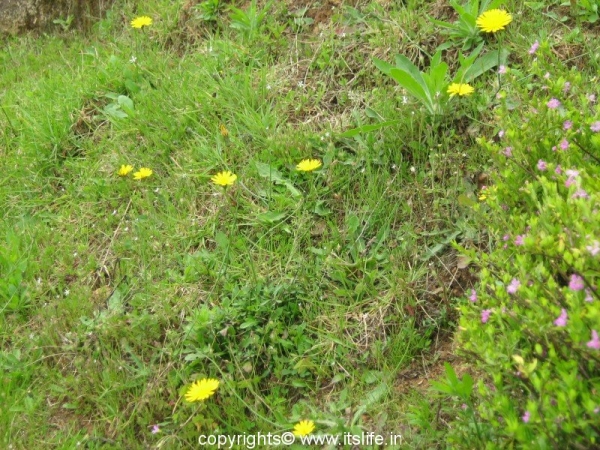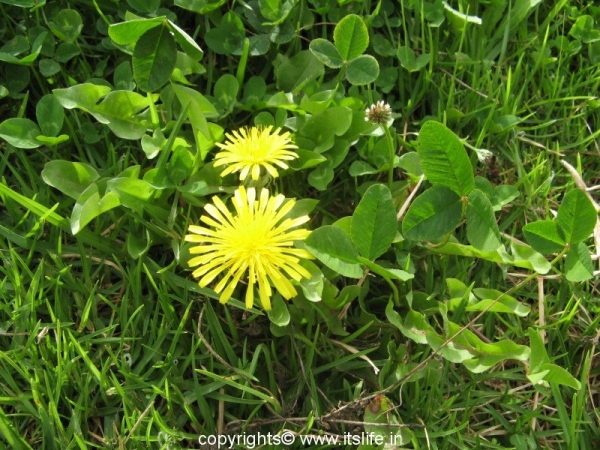The bright yellow flowers dotting the hill stations are perfect to welcome the holiday mood. The other common names of Dandelion are blowball, cankerwort, doon-head-clock, witch’s gowan, milk witch, lion’s-tooth, yellow-gowan, Irish daisy, monks-head, priest’s-crown, and puff-ball. In India, these flowers are known as Kaadu Shaavanthi in Kannada, Dudhi in Hindi, and Pitachumki in Bengali. The botanical name of this perennial plant is Taraxacum officinale and belongs to Asteraceae (Sunflower) family. These delightful plants have thought to have evolved about 30 million years ago in Eurasia.
Dandelion grows everywhere and to a height of 38 to 40 cm. Leaves are green and toothed and are 5 to 25 cm long. The name Dandelion is derived from the fact that the leaves resemble the Lion’s tooth (French: Dent de Lion). The leaves form a basal rosette above the root. The flowers bloom at the tip in single or in a bunch. They are bright Yellow and the heads are up to 4.5 cm wide. Each of the head contains many florets.
The fruit is formed with seeds enclosed. When the fruit matures and opens, it looks like a fluffy ball. The seeds are attached to a pappus (fine hairs), which is blown by the wind and widely distributed. These seeds are relished by certain birds.
Uses:
As Dandelion plant is an herb, it is edible and can be cooked to make many dishes. The leaves are rich in vitamins and minerals and a powerhouse of calcium, potassium, iron, and manganese.
It is used in Chinese medicine to cure many ailments like infections, bile, and liver problems over thousands of years.
When the stems and leaves are broken they ooze out a white, milky latex. Scientists are researching to find out whether to commercially produce natural rubber from Dandelion plants.




